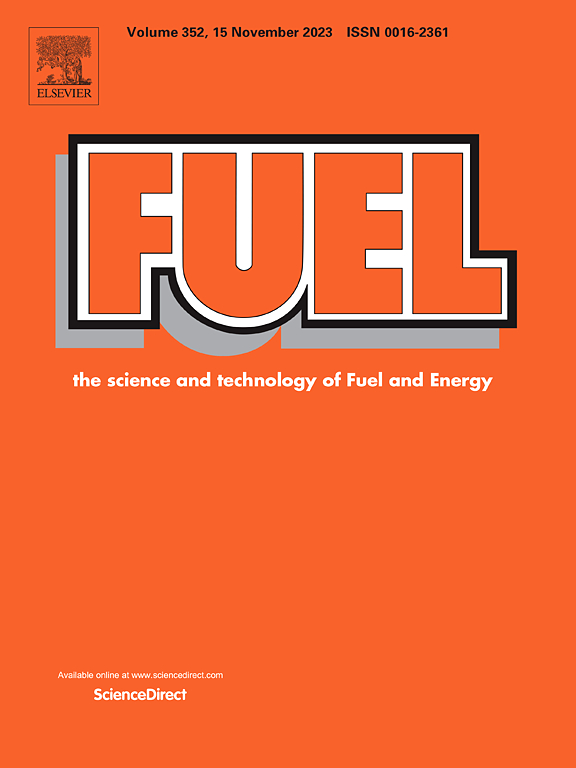Insight into kerogen II pyrolysis mechanism by master plot method based on TG-FTIR analysis
IF 6.7
1区 工程技术
Q2 ENERGY & FUELS
引用次数: 0
Abstract
The study of hydrocarbon generation from kerogen pyrolysis holds significant industrial and technological importance. However, the pyrolysis process is complex and current understanding remains insufficient. This article combines TG-FTIR analysis with master plot method to analyze the overall and each stage pyrolysis models of Chang 7 shale kerogen. The results show that the pyrolysis of kerogen follows order reaction with exponent of 4.5 across all temperature. Pyrolysis process can be divided into three distinct stages. The first stage involves the decarboxylation of oxygen-containing organic matter, leading to the generation of CO2. The second stage encompasses the intense pyrolysis of aliphatic and aromatic organic matter. The third stage involves the transformation from semicoke into coke with the generation of a few hydrocarbon gases. Kerogen pyrolysis is divided into four independent pseudo components (abbreviation: pc) by Fraser Suzuki function, successively namely organic matter containing carboxyl groups, aromatic compounds in organic matter, aliphatic compounds, and coke. At lower heating rates, pyrolysis of pc1 and pc2 is primarily governed by surface reactions and nucleation models. Pc3 is predominantly influenced by surface reaction and diffusion models. At higher heating rates, pc1 and pc3 are primarily governed by surface reaction and diffusion models, whereas pc2 is predominantly influenced by nucleation model. Pc4 is influenced by all three models though it exhibits minimal variation with different heating rate. This paper provides theoretical guidance for the cognition of kerogen pyrolysis mechanism and its future development.

求助全文
约1分钟内获得全文
求助全文
来源期刊

Fuel
工程技术-工程:化工
CiteScore
12.80
自引率
20.30%
发文量
3506
审稿时长
64 days
期刊介绍:
The exploration of energy sources remains a critical matter of study. For the past nine decades, fuel has consistently held the forefront in primary research efforts within the field of energy science. This area of investigation encompasses a wide range of subjects, with a particular emphasis on emerging concerns like environmental factors and pollution.
 求助内容:
求助内容: 应助结果提醒方式:
应助结果提醒方式:


